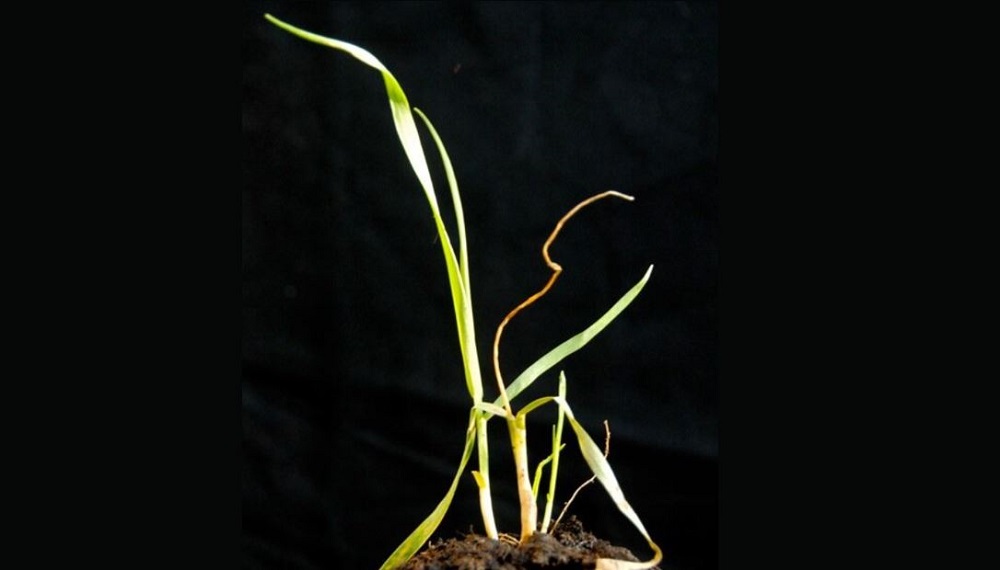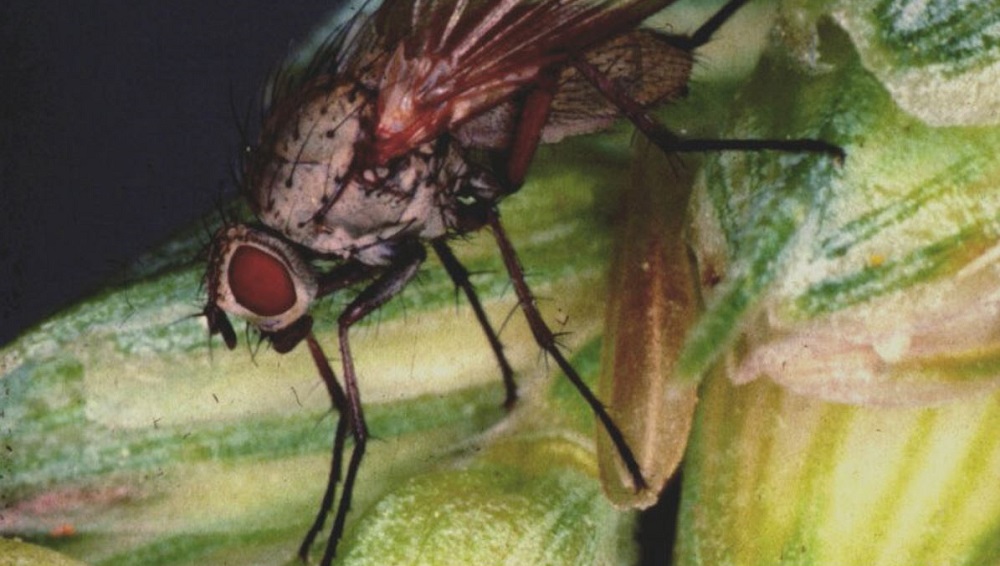- Home
- Knowledge library
- How to identify wheat bulb fly in cereals
How to identify wheat bulb fly in cereals
Learning to spot the signs of wheat bulb fly (Delia coarctata) will help you to gauge pest pressure and choose balanced management options for your cereal crops.
How to manage wheat bulb fly risk in cereals
Life cycle and symptoms of wheat bulb fly
The larvae of wheat bulb fly are white and legless. They have no distinct head. However, their front ends are pointed and their hind ends are blunt. Larvae bore into the base of the stem to feed, leaving a ragged entry hole.
 ADAS.JPG) ADAS
ADAS
Feeding can cause tillers to die back and display ‘deadheart’ symptoms.
 Dewar Crop Protection
Dewar Crop Protection
Adults are slightly smaller than, but similar in appearance to, house flies.
 ADAS
ADAS
This wheat bulb fly life-cycle illustration features in AHDB Project Report 624. It was created in BioRender by Daniel Leybourne at ADAS.
 ADAS.JPG) ADAS
ADAS
- Eggs laid on bare soil (Jul–Sep).
- Eggs hatch and larvae bore into crop stem-base to feed (Jan–Mar).
- Each larva attacks multiple tillers (Mar–Apr).
- Larvae emerge and pupate (Apr–May).
- Adults emerge from pupae, feed on saprophytic fungi on host plant and reproduce (Jun–Sep).
Get the latest results from our wheat bulb fly survey
Other larvae
Yellow cereal fly larvae are present at a similar time to wheat bulb fly. However, they are pale yellow with pointed ends, thinner and enter the crop through the top of the shoot. This results in a characteristic brown incision that spirals down the tiller. Unlike wheat bulb fly, each larva only attacks a single tiller. Frit fly larvae are present earlier in the season, with damage seen in September to January.
Learn more about the pests and natural enemies of field crops
Topics:
Sectors:
Tags:

